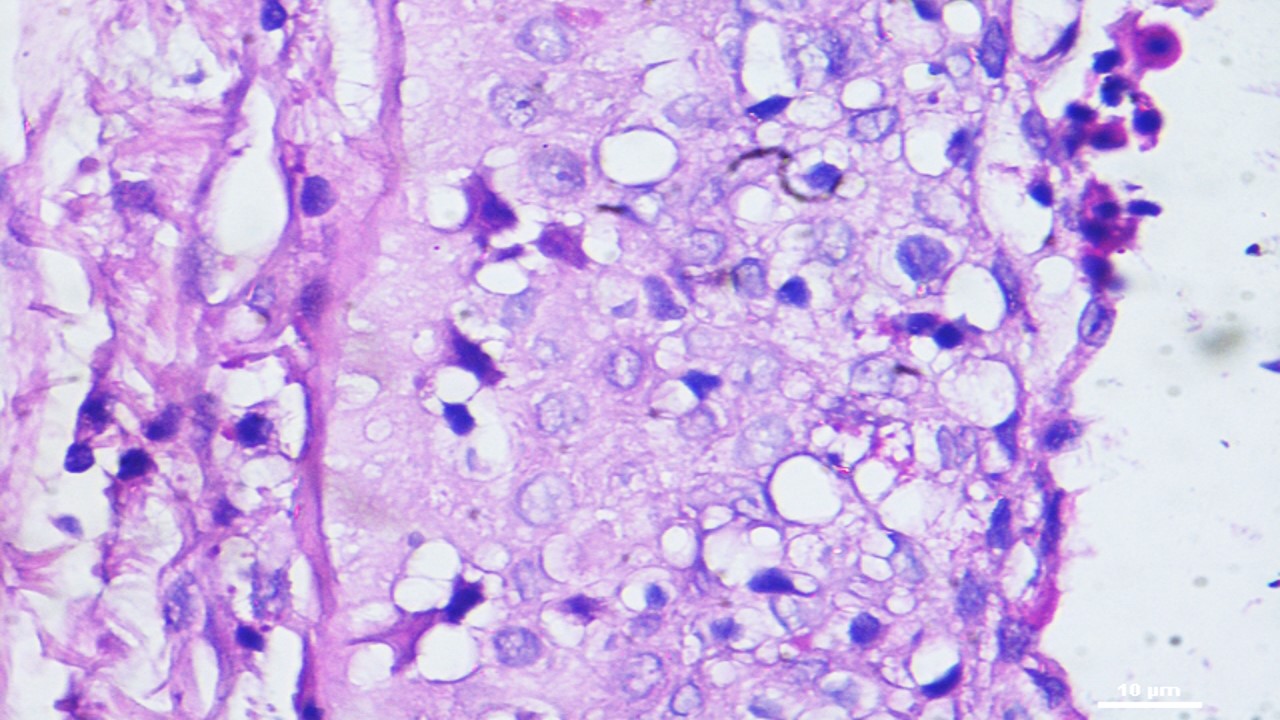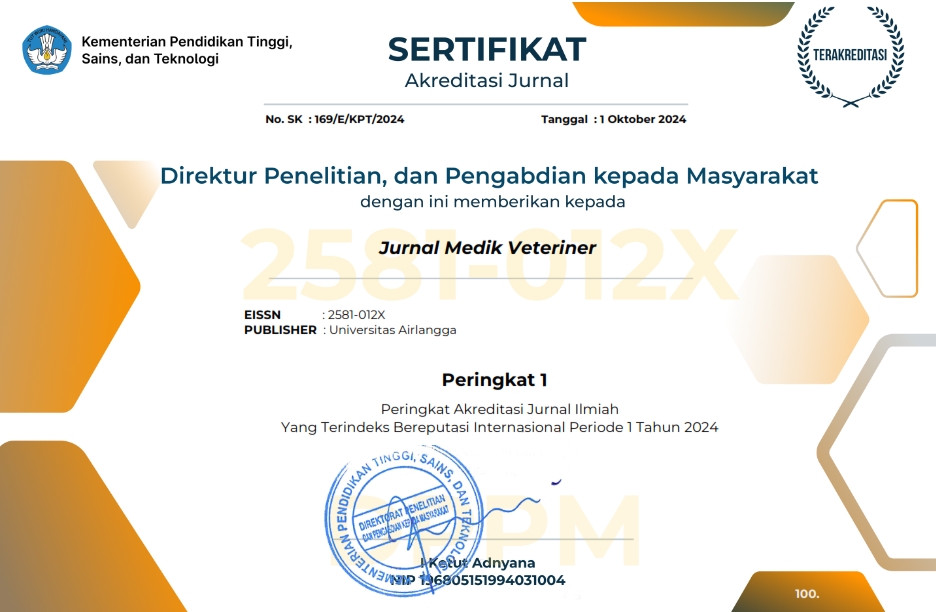Immune Responses of Club Cells in Fish: A Review

The primary line of defense against pathogens from the environment is often fish epidermis tissue. Nevertheless, little is understood about the physiological mechanisms that underlie the non-specific and/or specific protection that these cells can offer. The exact nature of the relationship between the evolution of ostariophysan fish club cells and chemical warning signals is still unknown and controversial. Fish epidermis layer cells comprise mucus cells, lymphocytes, macrophage cells, cuboidal and squamous epithelial cells, and cells specific to certain fish species. Club cells, also called "alarm cells," are chemical alarms that sound in the event of a potentially hazardous scenario. These cells will burst in the presence of a predator, releasing pheromones that, if the skin is physically damaged, trigger an avoidance and terror reaction. In sturgeon larvae, mucus cells were visible in week 1, but club cells did not appear until week 4. Due to their later development during ontogenesis and after wounding, club cells may not have as much of a protective effect during wound healing as filament or mucus cells. Club cells are mostly found in the epidermis of the skin, and it is thought that when they work in tandem with mucus and goblet cells to fight infections, they serve as the body's first line of defense.
Abd-Elhafeez, H. H., & Soliman, S. A. (2016). Origin of rodlet cells and mapping their distribution in ruby-red-fin shark (rainbow shark) Epalzeorhynchos frenatum (Teleostei: Cyprinidae): Light, immunohistochemistry and ultrastructure study. Journal of Cytology and Histology, 7, 435.
Bogataj, U., Mrak, P., Štrus, J., & Žnidaršič, N. (2019). Ultrastructural differentiation of plasma membrane and cell junctions in the hindgut cells is synchronized with key developmental transitions in Porcellio scaber. Arthropod Structure & Development, 50, 78–93.
Chivers, D. P., Brown, G. E., & Ferrari, M. C. (2012). The evolution of alarm substances and disturbance cues in aquatic animals. Chemical Ecology in Aquatic Systems, 127–139.
Damasceno, E. M., Monteiro, J. C., Duboc, L. F., Dolder, H., & Mancini, K. (2012). Morphology of the epidermis of the neotropical catfish Pimelodella lateristriga (Lichtenstein, 1823) with emphasis in club cells. Plos one, 7(11), e50255.
Delroisse, J., Kang, V., Gouveneaux, A., Santos, R., & Flammang, P. (2023). Convergent evolution of attachment mechanisms in aquatic animals. Cham: Springer International Publishing. In Convergent Evolution: Animal Form and Function. pp: 523–557.
Fikri, F., Wardhana, D. K., Purnomo, A., Khairani, S., Chhetri, S., & Purnama, M. T. E. (2022). Aerolysin gene characterization and antimicrobial resistance profile of Aeromonas hydrophila isolated from milkfish (Chanos chanos) in Gresik, Indonesia. Veterinary World, 15(7), 1759–1764.
Forbes, M. S., & Ferguson, D. G. (2001). Ultrastructure of Cells. Academic Press. In Cell Physiology Source Book. pp: 95–117.
Henrikson, R. C., & Matoltsy, A. G. (1967). The fine structure of teleost epidermis: III. Club cells and other cell types. Journal of Ultrastructure Research, 21(3-4), 222–232.
Jesuthasan, S. J., & Mathuru, A. S. (2008). The alarm response in zebrafish: innate fear in a vertebrate genetic model. Journal of Neurogenetics, 22(3), 211–228.
Kenconojati, H., Ulkhaq, M. F., Fasya, A. H., Lamadi, A., Imlani, A., & Mariah, S. R. (2023). Color brightness and growth levels of goldfish (Carassius auratus) reared with different light spectrums. Jurnal Medik Veteriner, 6(2), 250–255.
Khairani, S., Fikri, F., Purnomo, A., & Purnama, M. T. E. (2021). A Comparative Histological Study of Skin in Clarias gariepinus and Oreochromis niloticus. Media Kedokteran Hewan, 32(2), 90–96.
Mokhtar, D. M., & Abdelhafez, E. A. (2021). An overview of the structural and functional aspects of immune cells in teleosts. Histology and Histopathology, 36, 399–414.
Mokhtar, D. M., Zaccone, G., Alesci, A., Kuciel, M., Hussein, M. T., & Sayed, R. K. (2023). Main components of fish immunity: An overview of the fish immune system. Fishes, 8(2), 93.
Mustafa, E. S., & AL-Taee, S. K. (2020). Innate and Adaptive Immunity in Fish: A Review. Al-Anbar Journal of Veterinary Sciences, 13(2).
Päkk, P., Hussar, P., & Paaver, T. (2011). Alterations of club cell activity in epidermis of common carp, Cyprinus carpio (Actinopterygii: Cypriniformes: Cyprinidae), due to infection by Ichthyophthirius multifiliis (Protista: Ciliophora). Acta Ichthyologica et Piscatoria, 41(3), 185.
Pandey, S., Stockwell, C. A., Snider, M. R., & Wisenden, B. D. (2021). Epidermal club cells in fishes: A case for ecoimmunological analysis. International Journal of Molecular Sciences, 22(3), 1440.
Quatrini, L., Ricci, B., Ciancaglini, C., Tumino, N., & Moretta, L. (2021). Regulation of the immune system development by glucocorticoids and sex hormones. Frontiers in Immunology, 12, 672853.
Rani, C. A. M., Safira, A., Suryadiningrat, M., Fikri, F., Wardhana, D. K., & Purnama, M. T. E. (2022). Characterization of Tilapia collagen-loaded chitosan nanofibers synthesized by electrospinning method for wound dressing. IOP Conference Series: Earth and Environmental Science, 1036(1), 012034.
Safira, A., Rani, C. A. M., Puspitasari, R. A., Ayuningtyas, A. K. P., Mahendra, Y. A., Purnomo, A., Fikri, F., Chhetri, S., & Purnama, M. T. E. (2022). Amino Acid and Proximate Analysis of Type-1 Collagen from Sea Cucumber and Tilapia-Skin and its Potential Application as Artificial Tendon. Pharmacognosy Journal, 14(4), 358–361.
Segner, H., Verburg-van Kemenade, B. L., & Chadzinska, M. (2017). The immunomodulatory role of the hypothalamus-pituitary-gonad axis: proximate mechanism for reproduction-immune trade offs?. Developmental & Comparative Immunology, 66, 43–60.
Sire, J. Y., & Huysseune, A. N. N. (2003). Formation of dermal skeletal and dental tissues in fish: a comparative and evolutionary approach. Biological Reviews, 78(2), 219–249.
Wilske, C., Herzsprung, P., Lechtenfeld, O. J., Kamjunke, N., & von Tümpling, W. (2020). Photochemically induced changes of dissolved organic matter in a humic-rich and forested stream. Water, 12(2), 331.
Zhu, L. Y., Nie, L., Zhu, G., Xiang, L. X., & Shao, J. Z. (2013). Advances in research of fish immune-relevant genes: a comparative overview of innate and adaptive immunity in teleosts. Developmental & Comparative Immunology, 39(1-2), 39–62.
Copyright (c) 2024 Yeni Dhamayanti, Hanifa Khansa Khairunnisa, Elham Zahrudin, Muhammet Bayram, Suciyono Suciyono

This work is licensed under a Creative Commons Attribution-NonCommercial-ShareAlike 4.0 International License.
Authors who publish in this journal agree to the following terms:
1. The journal allows the author to hold the copyright of the article without restrictions;
2. The journal allows the author(s) to retain publishing rights without restrictions;
3. The legal formal aspect of journal publication accessibility refers to Creative Commons Attribution-NonCommercial-ShareAlike 4.0 International License (CC BY-NC-SA).






11.jpg)




















